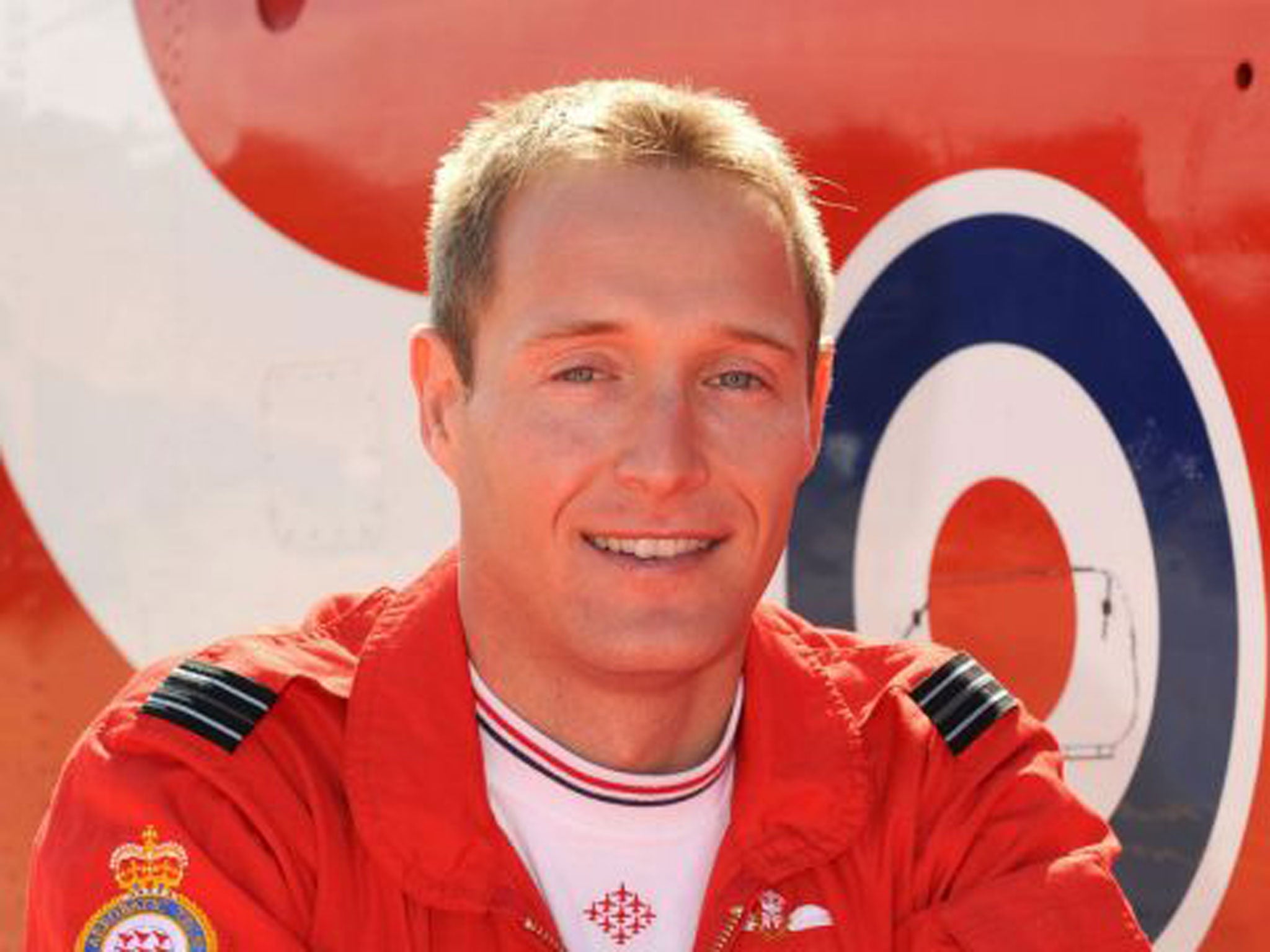Coroner vows inquiry in to death of Red Arrows pilot will leave 'no stone unturned'
Flight Lieutenant Sean Cunningham was killed in 2011 ejecting from an aircraft while it was still on the ground

A coroner has vowed to leave “no stone unturned” in the search for the truth about how a Red Arrows pilot was killed ejecting from an aircraft while it was still on the ground.
Pressure on the elite Red Arrows team to perform as frequently as possible will be among the factors investigated as possible causes of the death of Flight Lieutenant Sean Cunningham in November 2011.
Stuart Fisher, the Central Lincolnshire coroner, promised the pilot's family: “This is going to be a very thorough inquiry. I will leave no stone unturned.”
Witnesses will be asked, he said, whether too much pressure is put on the Red Arrows to put on too many displays.
“There have been suggestions that the number of displays the team are required to perform has got to the point where it has put pressure on the team,” he said. “As a consequence there has been a reduction in the amount of time they display.”
Possible design faults with the ejector handle, which could have led to the pilot being flung 200 feet into the air, and with the main parachute, which failed to open properly, will both be considered, a pre-inquest hearing at the Lincoln Cathedral Centre heard. The secondary parachute opened but failed to save the pilot's life.
Flt Lt was on the ground in a Hawk T1 at RAF Scampton in Lincolnshire, when he was mysteriously ejected.
The seat firing handle was identified as a potential cause because other pilots have reported problems with it getting snagged by other pieces of equipment in the past.
More than three dozen people are expected to be called to give evidence to the inquest, among them an expert described as an “ejection seat anorak”.
Kirsty Stewart, the first female pilot to join the Red Arrows, will be among the witnesses and is expected to be quizzed about an occasion during a training exercise at RAF Valley when one of her straps went through the ejector seat handle, almost causing it to be activated.
She will be asked to give her account of an incident at RAF Valley in which one of her straps went through the ejector seat handle, nearly activating the seat, during a training exercise.
Tom Kark QC, who represented Flt Lt Cunningham's family at the pre-inquest review, said: “Obviously, on behalf of the family, they would like the widest exploration possible of why their son and brother died.”
Among the questioned they wanted answered, he said, was whatr had been done to address the potential problem with the ejector seat handle before Flt Lt Cunningham's death, and what had been done afterwards to ensure no more pilots were placed “in a similar dangerous position”.
Join our commenting forum
Join thought-provoking conversations, follow other Independent readers and see their replies
0Comments